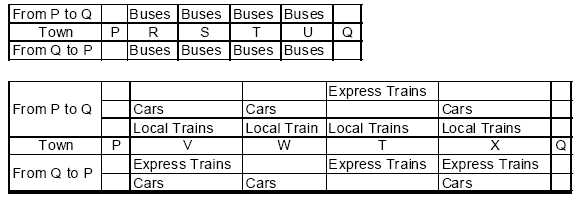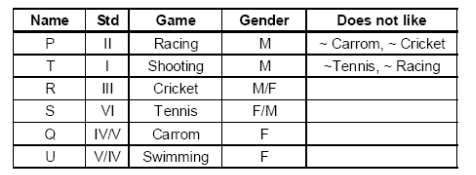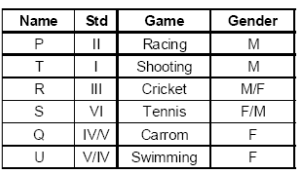BIMTECH PGDM Admissions 2026
AACSB Accredited | Highest CTC: 22 LPA | Last Date: 7th January 2026
Data Interpretation (DI) and Logical Reasoning (LR): The Data Interpretation and Logical Reasoning (DILR) section is known to be one of the toughest yet most rewarding parts of MBA entrance exams like CAT, XAT, and GMAT. Many students struggle here because it demands sharp thinking and smart CAT preparation strategies, not just speed. Starting early, practising regularly, and understanding the patterns can make a huge difference. Mastering DILR is key to boosting your overall score and standing out in the exam.
This Story also Contains

What is Data Interpretation & Logical Reasoning (DILR)?
Data interpretation (DI) means interpreting the given data and solving the questions based on the data provided in a set. These sets can be of various types like tables, pie charts, bar graphs, caselets, etc.
In the Logical Reasoning (LR) part, students must solve problems based on logic like puzzles, seating arrangements, blood relations, and pattern identification. Understanding the CAT 2024 Data Interpretation syllbaus is also very beneficial for the candidate.
DI portion mostly focuses on numerical data and has to do mathematical operations like average, percentage, or ratio to find the answer. On the other hand, in the LR part, analytical thinking is the most important thing. Most of the questions in LR sections are puzzle-based, where students have to use methodical reasoning and strategy to reach a conclusion and solve the questions.
The DILR section is important in exams like CAT, XAT, and other MBA entrance tests. In the CAT exam, for the previous five years, almost 20 questions with a weightage of 60 marks from the DILR section came. 70-75% of the DILR questions are multiple choice questions and 25-30% of questions are non-multiple choice questions. The level of difficulty in this section is moderate to hard.
Answering these questions can be very time-consuming as the questions are generally very tricky and difficult.
To achieve good marks in the DILR section, students should follow the following skills and try to improve them in time.
Analytical thinking is an important skill for solving any type of complex problem. First, you must break down the problem into smaller parts to analyze it easily. It will also help you to follow patterns or trends, establish relationships between the given data, and calculate the numerical values using various mathematical operations.
In the DI part, students have to deal with lots of bigger puzzles. So analytical thinking is a very important skill to solve these puzzles.
Practice mental maths to solve basic maths quickly and efficiently without using a pen or paper. This will save lots of time during the exam.
In the DI section, there will be lots of charts, graphs, tables, caselets, etc. So, analyzing the data to check the pattern or trend, handling numerical values, and drawing conclusions are very important to solve these types of problems.
The correct results in the DI section are obtained through accurate data analysis.
Often students need to use mathematical operations like percentages, averages and ratios to get the result. So knowledge about these operations is also very helpful.
Logical reasoning(LR) section is mostly about logical thinking. In this part, problems like seating arrangements, blood relations family tree problems, or pattern recognition types of problems appear.
Logical thinking will help you to deduce these problems and draw conclusions based on the given data.
Like in blood relations family tree problems, you have to establish relationships between the persons given the constraints in the data.
The DILR section is one of the most time-consuming parts of the exam. Understanding these questions and deducting them from the data often consumes lots of time in the exam. Students have to strategically approach this section.
Balancing speed and accuracy is essential to score good marks. Students have to decide whether to skip a set or attempt a set after reading it once or twice. If the set is very complicated, then skipping it for the time being is the best solution. Return to it if you have time left at the end.
The DILR section is all about solving complex and multi-layered problems. So, students must strategize problem-solving skills like identifying the correct pattern, making notes of important data and arranging them logically, and eliminating the odd options in the multiple-choice questions to ace this section in the exam. It will also help to minimize the errors and increase the accuracy.
To prepare for Data interpretation and Logical reasoning for MBA entrance exams, students need to follow some basic rules. Following these rules will give them a strong base on which to score good marks in the DILR section of the exam.
Before appearing in the exam, students should build a strong foundation in Data interpretation and Logical reasoning questions.
Data interpretation questions are mostly about interpreting data from types of sets like charts, tables and graphs. However, in the logical reasoning questions, students are required to apply reasoning when seeking logical answers.
Begin from the beginner books and materials, then progress to the more advanced sets. Accompany yourself with those types of problems and be ready for the problem in the exam.
Students need to practice the previous year's questions first to get a good idea about what types of questions generally come in the exam and know the difficulty level of the questions.
Practicing different kinds of sets helps you do all of this better, and is, therefore, an absolute necessity.
Giving 3 to 4 mock tests every week will help students get an overview of the exam conditions and improve their time, speed, and accuracy. Students need to evaluate those tests to check where the mistakes are generally happening or in which portions of the set are taking more time. Then work on those weaker areas and refine strategies accordingly.
Mental endurance is very important in time-based exams. Set a timer during giving offline mock tests so that you don’t get distracted. Try to finish the exam at least 5 minutes before the allotted time to check all the questions once.
As discussed before, the DILR section is very time-consuming. So it is very crucial to decide where to invest more time. During the mock tests, evaluate your strengths and weaknesses in the DI and LR sections and strategize accordingly. Then during the exam, approach your strong section first to secure the numbers. Then do the comparatively weaker section. But don’t neglect it fully as it is also important to achieve success.
Read More:
https://bschool.careers360.com/articles/cat-dilr-sample-questions-by-experts
https://bschool.careers360.com/articles/cat-preparation-tips-for-beginners
https://bschool.careers360.com/articles/how-prepare-for-logical-reasoning-for-cat
Q1. Refer to the data table below and answer the questions.
Buses, cars, and trains are the only means of public transportation that can be used to travel between town P and town Q. P, T and Q are the only towns that fall along both the bus and train routes.
On the way from P to Q, the following halts are taken:
- The buses halt at towns R, S, T, and U in that order.
- Express trains halt only at town T.
- Local trains halt at towns V, W, T, and X only, in that order.
- Cars halt at towns V, W, and X only, in that order.
On the way from Q to P, the following halts are taken.
- The buses halt at towns U, T, S, and R, in that order.
- Express trains halt at towns X, and T only, in that order.
- Cars halt at towns X, W, and V only, in that order.
Question: In order to travel from Town X to Town R with the least possible halts along the routes, it is necessary to take:
an express train and a bus
a bus and a car
a local train and a bus
a car and a bus
Answer:
From the data in the question, the following routes are available.

The only means to travel from town X to town R is to take an Express train to town T, and then take a bus from town T to town R.
Hence, the correct answer is “an express train and a bus”.
Q2. Refer to the data table below and answer the questions.
There are three boys and three girls (in no particular order) – P, Q, R, S, T and U – studying in standards I, II, III, IV, V and VI (in no particular order), and playing the games Racing, Carrom, Cricket, Tennis, Shooting and Swimming (in no particular order). The following information is given.
1. P is male and does not like to play Carrom and Cricket. He is in an even-numbered standard.
2. T does not play Tennis or Racing. T is in standard I and he is one of the three boys.
3. R plays Cricket and studies in standard III whereas S plays Tennis and studies in standard VI.
4. Q and U are of the same gender and play Carrom and Swimming respectively.
5. Two girls are from standard IV and V.
Question: If Q is in standard IV, then in which standard is the student who plays Swimming?
IV
V
II
I
Answer:
Putting all the given information in the table given below, we get:

From statement [4], we can say that Q and U are females because we know P and T are males and there are three males and three females.
T does not play Tennis and Racing.
Four games Cricket, Tennis, Carrom, and Swimming are played by R, S, Q, and U respectively.
Therefore, T participated in shooting and P in Racing.
Therefore we have,

Now all the questions can be answered.
If Q is in standard IV, then U is in standard V.
Therefore, U takes part in Swimming.
Hence, the correct answer is “V”.
Now, we will discuss the important topics of DI and LR separately and how to deal with them.
Tables and Charts Interpretation: These types of questions consist of numeral data and students have to extract, interpret, and calculate those data. Knowing mathematical operations like percentages, averages, and ratios is very important in these questions.
Bar graphs, Line graphs, and Pie charts: A pie chart is divided into sectors, each representing a proportion of the whole and is effective for showing the relative sizes of parts of a whole.
Line graphs display continuous data or a sequence of values.
In the Bar graph, data is represented with rectangular bars where one parameter is given on the x-axis and the other parameter is given on the y-axis.
Caselets and Venn diagrams: A Caselet is a collection of facts presented in the form of paragraphs.
Venn diagrams are typically used in set theory-based questions where students need to interpret overlapping sets and draw logical conclusions about the relationships between different categories.
Arrangements (Linear and Circular): In this type of question, students need to place a certain number of people in a linear straight line or circular line. In circular line questions, having an idea about clockwise and anti-clockwise directions always helps students.
Puzzles and Seating arrangements: Puzzles are often straightforward to more complex logical deduction-type problems. In seating arrangement problems, students have to place some people in order.
Problems on puzzles need to be handled systemically and solving sudoku in the newspaper with help you, on the other hand for seating arrangement problems, approach with a starting position or ending position.
Syllogisms, Blood Relations, and Statements & Conclusions: In syllogism questions, students have to draw conclusions from two or more statements. In blood relation problems, students have to draw a family tree to analyze and it will test their knowledge about family relationships as well. In the statements & conclusions type of problems, students have to logically deduce whether the given conclusion is apt or not from the given statements.
Logical sequences, Series, and Coding-decoding: In logical sequence and series problems, students have to find patterns between numbers, letters or objects and fill in the blanks with relevant information. Coding problems generally appear in the form of a code and students have to decode the problem to answer the question. Strengthening pattern recognition is very essential to solve these types of problems.
Highest Package 27.25 LPA | Top 100 Average package 16.65 LPA | AACSB Accredited | Ranked 52 by QS International
400+ Recruiters | Highest CTC 21 LPA | Average CTC 8 LPA | 92% Placements in 2025 | Ranked as Platinum Institute | Awarded Best Business School of the Year
Based on the trends of the previous year, some common mistakes students make during exams are as follows:
Try to understand the mistake and make a strategy accordingly so that you can’t make the same mistakes.
After practising too many DILR questions, students sometimes get overconfident in the exam in this section and often adjudge complex sets as like other sets. But complex sets are a bit tricky and those need to be handled very carefully.
Give adequate time to complex sets and don’t rush over quickly to jump to conclusions. Double check is always necessary for accuracy. If the sets seem too complicated, then it is best to skip them for the time being and visit them at the end.
Misinterpreting data in the DILR section is the most common mistake among students. Students often rush through the data and miss a constraint in the data or misread axes. This leads to the downfall of the whole set and students get wrong answers to the questions of that set.
To avoid that mistake, double-check all the data and mathematical calculations. It is always better to be accurate to perform well in this section.
The DILR section is always time-consuming. So allocate a time limit for each set like if it looks like a moderate set then do it for 7-8 minutes and if it looks hard then do it within 10-12 minutes.
Do not overspend much time in a question and try to attempt the easier ones first. Otherwise, you will waste too much time on difficult questions and potentially easier questions will be left unattempted.
Practice makes a student perfect. Many students often do not practice enough mock tests and think they will manage their time directly in the exam. This thinking is not right. For time-based exams, students need to practice at least 3-4 time-based mock tests every week to get familiar with the time constraints and strategize what time to invest in each part. A perfect time division strategy will often lead to success.
Also, rectify the mistakes which happen in the mock test and prepare those topics well so that the same mistakes do not happen again in the actual exam.
Understanding the various preparation tips for DILR section of the CAT examination is essential for securing a good CAT DILR score. Some of the essential CAT DILR preparation tips are given.
Starting early and constant practice often lead to success. Don’t wait until two months before the exam to prepare for this important exam. At least start 6 to 8 months before the exam and practice thoroughly. Building a foundation is very important to succeed in any kind of exam. Start with the basics and step by step move from moderate to hard. Don’t jump a step as gradually increasing difficulty will help you to improve your mindset and accuracy.
Analyze at least the previous five-year questions to get an idea about the trend and most important topics in this section. The most frequently asked topics in this section are tables and Charts Interpretation, Puzzles and Arrangements, and Logical Sequences.
Give more importance to these topics and practice several questions on these topics.
To succeed in any kind of exam, strategy is equally important as studying. Set time limits for each type of set beforehand and try to analyze quickly which sets are harder. During the exam, attempt the easier sets and questions first. This will boost your confidence. Don’t hesitate to leave complicated or time-consuming questions for later. Focus on accuracy rather than attempting most of the questions with guesses.
Avoiding these mistakes will eventually lead to success.
Given below are a set of 3 books written by management entrance exam experts which can help you to take your DILR preparation for MBA exams to the next level.
Name of the Book | Author |
Logical Reasoning and Data Interpretation for the CAT | Nishit K. Sinha |
CAT Data Interpretation & Logical Reasoning | Gautam Puri |
Data Interpretation & Data Sufficiency | Ananta Ashish |
Given below are the links to essential Data Interpretation and Logical Reasoning books designed by Careers360. The candidates are encouraged to download and study them to enhance their DILR preparation.
TITLE | DOWNLOAD LINK |
Data Interpretation (CAT) | |
CMAT 2025 Quantitative Techniques & Data Interpretation Questions Answers. |
Logical Reasoning Study Material:
The DILR section in CAT carries significant weightage, typically comprising 20-22 questions and 60-66 marks. Key topics include arrangements (linear, circular), puzzles, blood relations, data sufficiency, and various graph types (bar, line, pie charts, caselets). Both DI and LR generally have equal importance. Consistent practice with diverse problem sets is crucial for success in this often unpredictable section.
Category | Description | No. of Qs | % Weightage |
Games & Tournaments | Matching, rankings, constraints | 5 | 22.73% |
Linear Arrangements | Classic LR (ordering/sequencing people/items) | 5 | 22.73% |
Quant-Based DI | Numerical interpretation of data | 4 | 18.18% |
Line & Bar Graphs | Visual interpretation, growth-related DI | 4 | 18.18% |
Network Flow Diagrams | Route/path optimizations with constraints | 4 | 18.18% |
Total | 22 | 100% |
Slots | CAT DILR Topics | Number of Questions |
Slot 1 | Graph | 5 |
Token Value | 5 | |
Linear Arrangements | 5 | |
DI- Metro Lines | 5 | |
Slot 2 | Diagram-based LR Set- Widget Supplies | 5 |
LR- Salesmen + 4 Companies | 5 | |
DI- Cosmetic Sales | 5 | |
DI- Company Revenue and Cost | 5 | |
Slot 3 | LR- Arrangements/ Rankings/ Team Formation | 5 |
LR- Games and Tournament- 4 People | 5 | |
DI Based on Graph- Gender + Colour | 5 | |
DI- Ratio-based | 5 |
Reasoning-based DI | 28 | 47% |
Routes and Networks | 5 | 8% |
Scatter Graphs | 5 | 8% |
Bar Graphs | 5 | 8% |
Table-based DI | 5 | 8% |
Ordering and Sequencing | 6 | 10% |
Bar Graphs | 8 | 13% |
Reasoning-based DI | 19 | 32% |
Table-based DI | 21 | 35% |
Games and Tournaments | 4 | 7% |
Topic | Number of Questions | Percentage |
Table-based DI | 28 | 47% |
Logical Deductions and Connections Reasoning | 6 | 10% |
Reasoning-based DI | 13 | 22% |
Order and Ranking | 6 | 10% |
Games and Tournaments | 6 | 10% |
Venn Diagram | 4 | 7% |
Focus on books that offer a strong conceptual foundation in both data interpretation and logical reasoning for CAT DILR 2025. Look for resources with a wide variety of practice problems across different difficulty levels. You must also practice CAT previous year's papers. Give special emphasis to books that has shortcut techniques and clear explanations for complex sets are particularly valuable.
| CAT Books Name | Author Name |
Logical Reasoning and Data Interpretation for the CAT | Nishit K. Sinha |
A Modern Approach to Logical Reasoning | R.S. Aggarwal |
Data Interpretation & Data Sufficiency | Ananta Ashish |
CAT Data Interpretation & Logical Reasoning | Gautam Puri |
Frequently Asked Questions (FAQs)
Logical Reasoning and Data Interpretation for the CAT by Arun Sharma is widely recommended. It offers comprehensive coverage and a good range of practice problems.
A good DILR score typically ranges from 90th percentile roughly 30-35+ marks, depending on the CAT exam's difficulty each year.
Table-based DI, Reasoning-based DI, Logical Deductions, and Games & Tournaments are highly important. Also, prioritise Venn Diagrams and Order & Ranking for a comprehensive preparation.
Practice consistently with diverse sets and also analyse mistakes thoroughly to understand the underlying logic.
Start by clarifying your basics in logical reasoning and solving all kinds of DI sets on a regular basis to develop familiarity and confidence.
DILR plays a major role in MBA entrance exams and can serve as a differentiator because it is of medium to high difficulty level.
Practice daily timed sets, review errors, and make a plan to select the correct sets in the exam for optimal efficiency.
Yes, mock tests assist in simulating actual exam conditions, enhance time management, and identify strengths and weaknesses in DILR.
Both are equally significant; make balanced preparation as most exams have these sections together to assess overall analytical abilities.
On Question asked by student community
Hello Sunita
IIM Sambalpur follows three stage selection process. Before the selection process starts here are the percentage of candidates who will be shortlisted at each stage in each category to meet reservation requirements
Sc-15%
St-7.5%
Nc-obc- 27%
Ews-10%
Stage 1 ( Based on cat 2025 shortlisting)
Minimum percentile applicable
Hi there,
With a B.tech in industrial engineering from IIT Roorkee and a CAT 2025 score of 98.89 percentile and strong sectionals your profile is solid for top B-schools. For the top IIMs like Ahmedabad and Bangalore, calls for engineers usually go to candidates with near perfect percentiles. Your score
Hello,
The IIT Guwahati cutoff for SC and EWS categories depends on the branch, year, and JoSAA counselling round, but you can get a general idea from recent trends.
For the SC category, closing ranks usually range from 4,000 to 9,000 for popular branches like CSE, ECE, and Mechanical, while
with this percentile, you can get into tier 2 or tier 3 college, the list of the few notable college is given below-
1) FLAME university, Pune
2) AIMS institute, Bangalore
3) Doon business school, Dehradun
4) Christ university, Bangalore
5) NIT Trichy
6) KIIT school of management, Bhuvneshwar
A CAT percentile of 99.64 is an excellent score and definitely places you in a strong position for top IIM calls, including IIM Ahmedabad, IIM Bangalore, and IIM Calcutta. However, admission to these institutes is not based on CAT score alone. Each of these IIMs follows a holistic selection process
Ranked among top 10 B-Schools in India by multiple publications | Top Recruiters-Google, MicKinsey, Amazon, BCG & many more.
Last Date to Apply: 10th Jan | Globally Recognized by AACSB (US) & AMBA (UK) | 17.8 LPA Avg. CTC for PGPM 2025
Highest Package 27.25 LPA | Top 100 Average package 16.65 LPA | AACSB Accredited | Ranked 52 by QS International
Phase 02 Applications Window Closing on 23rd January 2026 | 100% Placement Record | Average CTC 12.75 LPA | Highest CTC 40.31 LPA | Median CTC 12.49 LPA
NAAC A+ Accredited | Among top 2% Universities Globally (QS World University Rankings 2026)
Application Deadline 15th Jan’26 | UGC Approved Programs | Near 100% Placement Record | Up to 100% Scholarships | Highest CTC 21.32 LPA